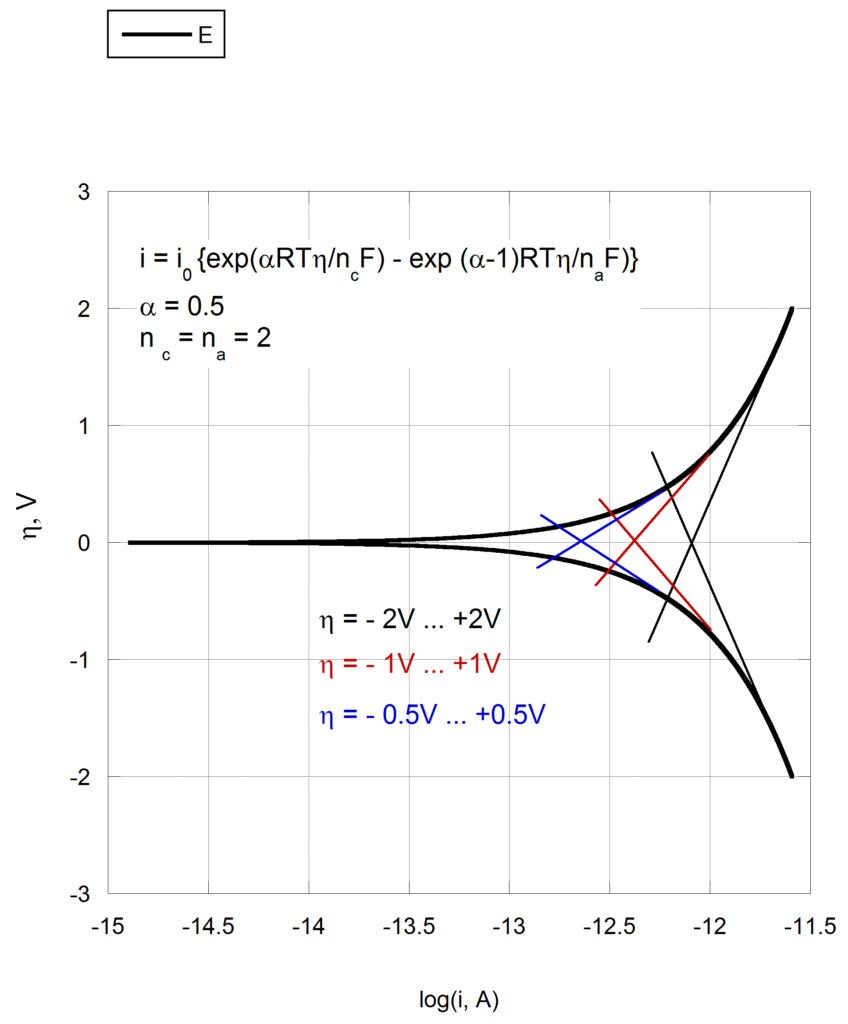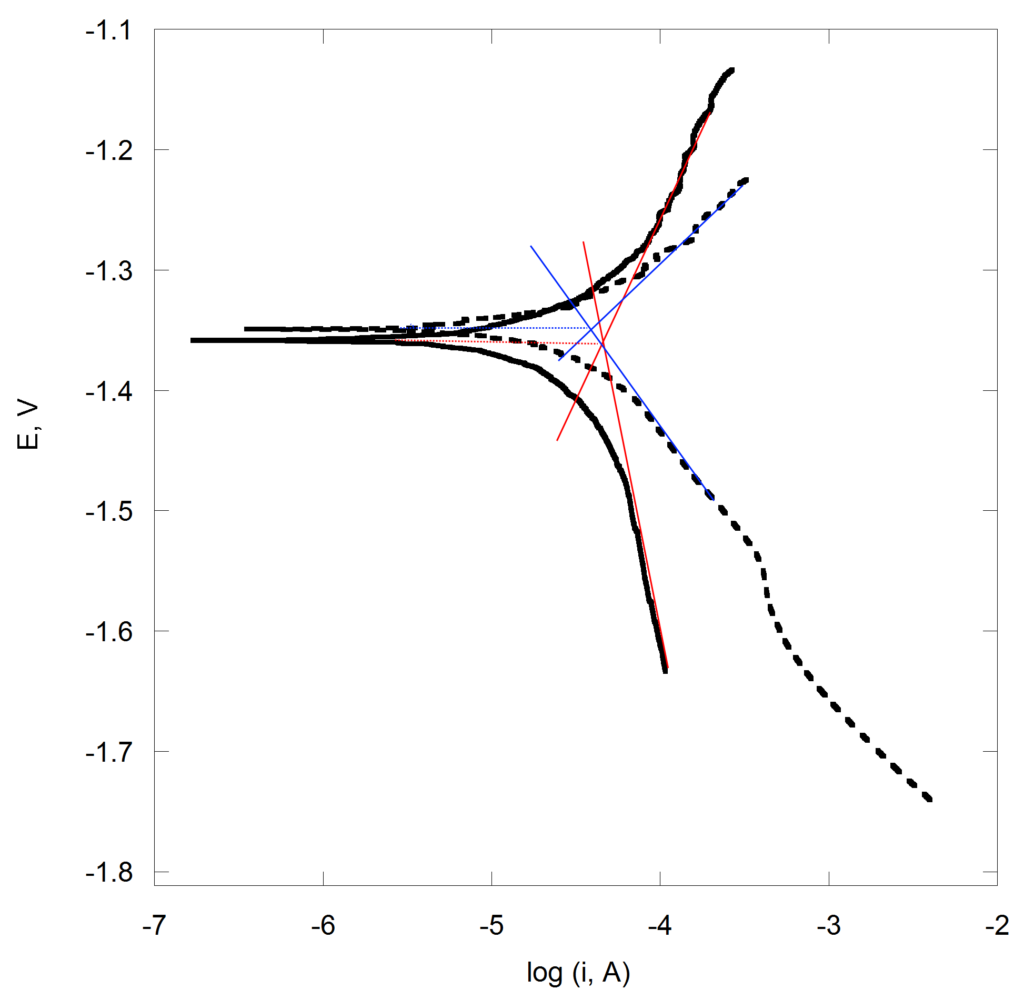The Tafel plot which you can see in the picture below, is the most ideal polarization curve that can be. It was built with the data points computed by the Butler-Volmer equation for the following parameters: T = 298K, nc = na = 2 electrons, α = 0.5, io = 10-11 A. Any real polarization curve is ‘worse’ from the point of view of Tafel analysis.

Three sets of Tafel slopes were built to this plot. The black slopes were built for the over-voltage range of ±2.0 V, the red slopes were build for the range of ±1.0 V and the blue slopes were built for the range of ±0.5 V. As is seen from the picture, while the corrosion potentials obtained from all the slopes are identical (and equal to the observed corrosion potential), the corrosion currents obtained from the slopes very strongly depend on the range of over-potentials so that corrosion current measured for the largest potential range is 5 times larger than the current measured for the smallest potential range. The problem is that almost for any potential range one can select a sufficiently linear part, but these parts will be different for different potential ranges, the larger the range the larger the Tafel slopes.
In reality, for most cases we can only measure polarization curves in the range of ±0.25 V, sometimes even less. Real polarization curves are usually distorted by additional processes and noises. See, for example, the following two Tafel plots measured for the corrosion of a magnesium alloy in salt water:

 The plot shown with the solid line is good (although a bit noisy in the anodic branch). Therefore we should take the maximal available range for the building of the Tafel slopes (red lines). The other Tafel plot, shown by the dotted line is not only noisy. It contains a clear indication of an additional process in the cathodic branch. Again, we should take the maximal available potential range for the building of the Tafel slopes (blue lines). For this case we shall have to limit the cathodic branch by the beginning of the additional process which would seriously distort the result.
The plot shown with the solid line is good (although a bit noisy in the anodic branch). Therefore we should take the maximal available range for the building of the Tafel slopes (red lines). The other Tafel plot, shown by the dotted line is not only noisy. It contains a clear indication of an additional process in the cathodic branch. Again, we should take the maximal available potential range for the building of the Tafel slopes (blue lines). For this case we shall have to limit the cathodic branch by the beginning of the additional process which would seriously distort the result.
Summarizing, we shall have to consider the following rules when building Tafel slopes:
- Take the largest available range of potentials.
- Be prepared to face polarization curves, for which the correct building of Tafel slopes is impossible.
- Always double-check by other methods the results calculated from the Tafel slopes.
